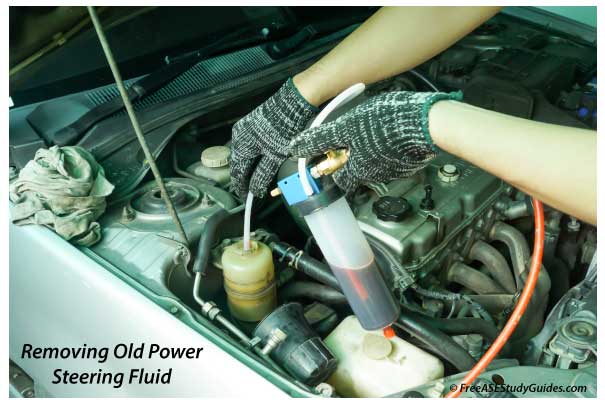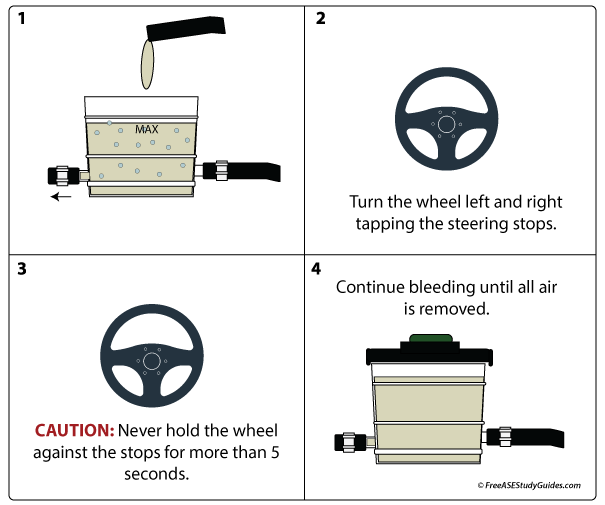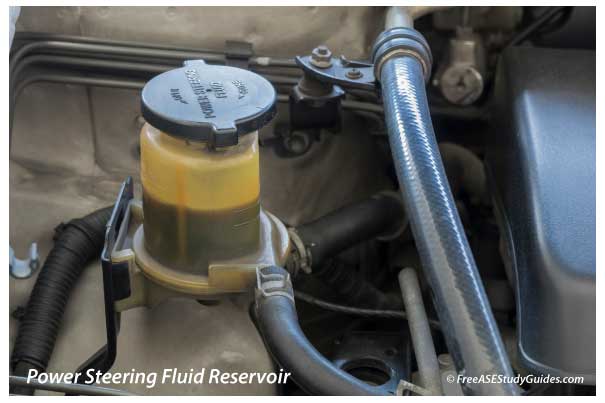Bleeding a Power Steering System

Power steering systems use hydraulic pressure to assist the driver. Hydraulic pressure makes it easy to turn the vehicle at any speed. Introduce air into the system, and the system's pressure and performance suffer. Air is compressible and absorbs much of the system's turning force.
After replacing a hydraulic component of the power steering system, it's bled to remove any trapped air. Make sure all connections are tight, preventing fluid from leaking out and air from entering in.

To bleed the system, raise the wheels off the ground and fill the reservoir with fresh power steering fluid. Start the engine and turn the wheel left and right about 20 times or so, but do not hold it against the stops for more than 5 seconds. It causes a sudden increase in system pressure that can damage internal seals and rupture hoses.

Listen for a sucking sound or air bubbles in the fluid. If air bubbles remain, shut down the engine for a few minutes and let the fluid settle. Inspect the system again for leaks, make sure all of the air is removed, and fill the reservoir to its MAX level. No air bubbles, foam, or leaks are allowed before returning the vehicle to service.